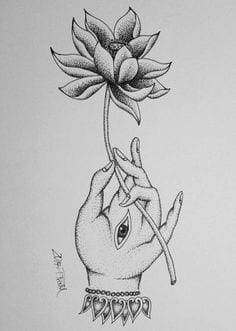Zen’s Precepts in Five Minutes
James Ishmael Ford
When most people think of Zen, if they do, they probably think of some kind of expansive consciousness. Based on what I see on social media, expansive into vagueness. That “moment of Zen” is usually a non sequitur of one sort or another. Others envision a libertarian spirituality where the moment is all about feeling good.
With ten minutes of study one realizes Zen is actually an ancient spiritual tradition, Mahayana Buddhism washed through Chinese culture with the odd nod to Daoism and Confucianism. But it is Buddhism, if with a twist. Zen has a major aesthetic side, very much appreciative of nature and spontaneity and the use of metaphor and our very physicality, our bodies, to push the mind and heart toward something.
Zen has several core aspects. Most famously upholding a consciousness that is “neither one nor two.” That is a place of awareness neither trapped in the natural dualism of our reasoning function, nor within a pervading sense of unity or boundlessness. This is called by several names, but I tend to prefer awakening.
But this is not in fact where the matter of Zen ends. That awakening is also tied up with a small cluster of spiritual disciplines, most focused on silent meditation, but also with a tradition of encounter stories which are engaged as invitations into ever deeper perspectives of awakening. That place which is not one, nor two. So, these disciplines are very important. The very word “Zen” means meditation. So, these two facets, an awakened heart or mind, and a cluster of disciplines. Almost enough to make a stool.
And there is a third leg. Beyond that sense of awakening and spiritual practices there are the precepts. The precepts can be seen as moral imperatives not unlike the Ten Commandments.
These are the three aspects, the three legs of Zen. Awakening and the practices and the precepts. While precepts are common to all Buddhisms, within Zen they take on some unique shades of emphasis.
Here I want to limit myself to talking about the core five. In one sense they’re the precepts the Buddha of history, Gautama Siddhartha, gave to laypeople, Householders. They also form the first five precepts of monastic ordination, although the precept concerning sexuality is understood differently by Householders and monastics. In Zen they also come by way of a probably Fifth-century Chinese scripture, the Brahmajala Sutra, the Brahma Net, which features ten major and forty-eight minor precepts. The five of the major precepts are nearly identical with the monastic codes. Again, sexuality is understood differently for monastic and householder. And also the traditional framing around intoxication is about dealing in alcohol. But the nuances of intoxication are still there.
Whether from the monastic codes or the Chinese tradition, these first five feel and in many ways are straight forward. Do not kill. Do not steal. Do not misuse sexuality. Do not lie. And, do not use drugs.
One can see the Ten Commandment feel to these precepts, especially in that “do not” formulation. But, in fact, they’re more complicated. For one, many people engage them from an invitational perspective: Foster life. Respect the integrity of things, their boundaries. Respect your body and other’s bodies. Speak truthfully. And, live into your clarity of experience and vision.
Of course, that’s nowhere near the end of the matter. When we think of them as part of that three-legged stool of the intimate way, of the path of awakened hearts, their significance becomes clearer. Not just good ideas. Not just crowd control. But, something more.
One of the gifts of Zen is that physicality, the acknowledgement we are bodies. We don’t occupy our bodies for a while, we are our bodies. Zen isn’t overly concerned with larger views of post-mortem existences. It has no problem with the larger Buddhist story of cycles of suffering and the dream of release. But it can fit into other stories of that sort, as well. Like those of Abrahamic traditions. Because. Because the stories matter less than who we are in this moment. The one that is a body. And how we live with it.
So, sometimes the precepts are just rules. There are times in our lives when we just need rules. But, they can also be descriptive of what the awakened life looks like. They describe the Bodhisattva heart, the they show the great vow of our going together.
All beings. One body. The precepts of Zen speak to the intimate way.
A path we walk together.













